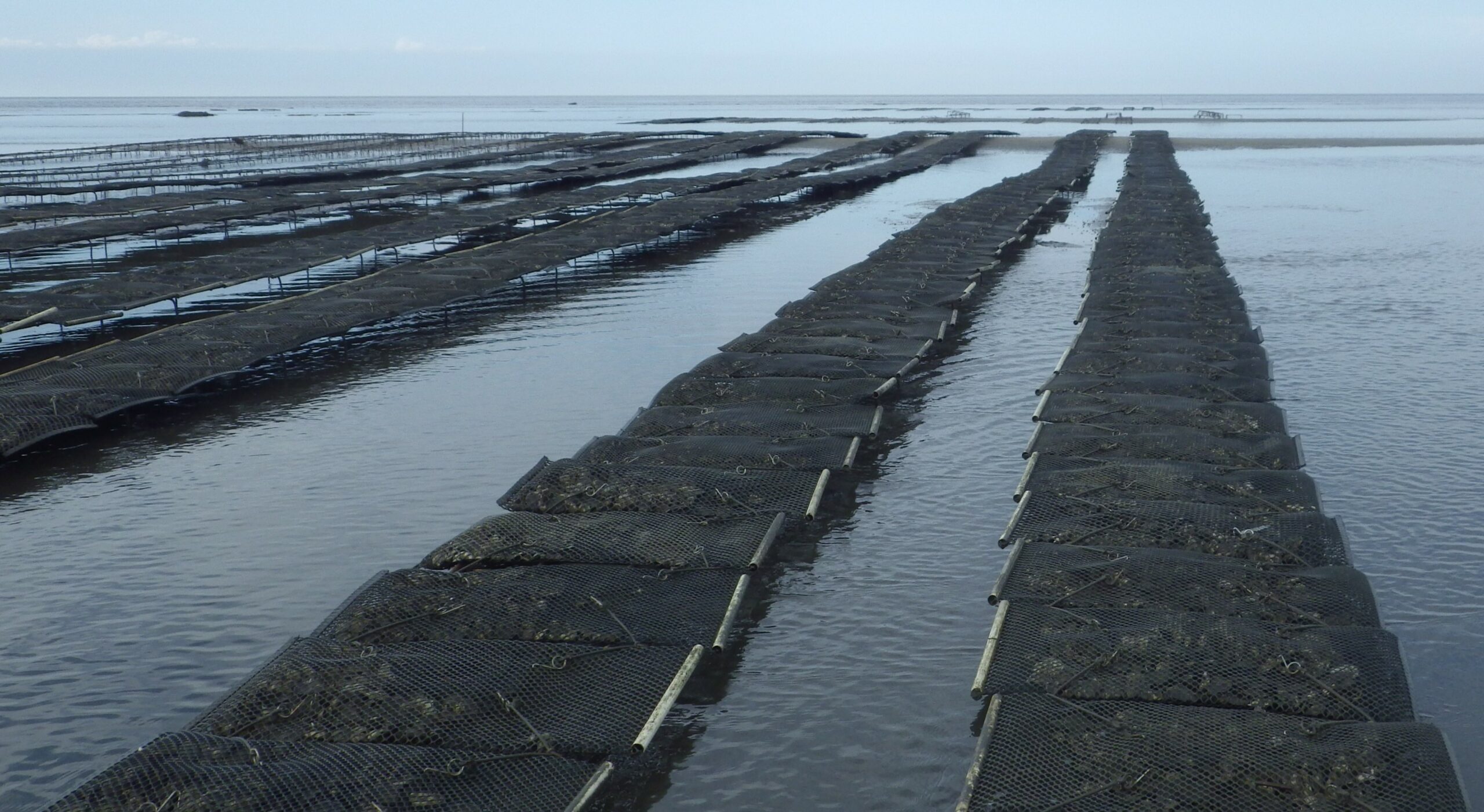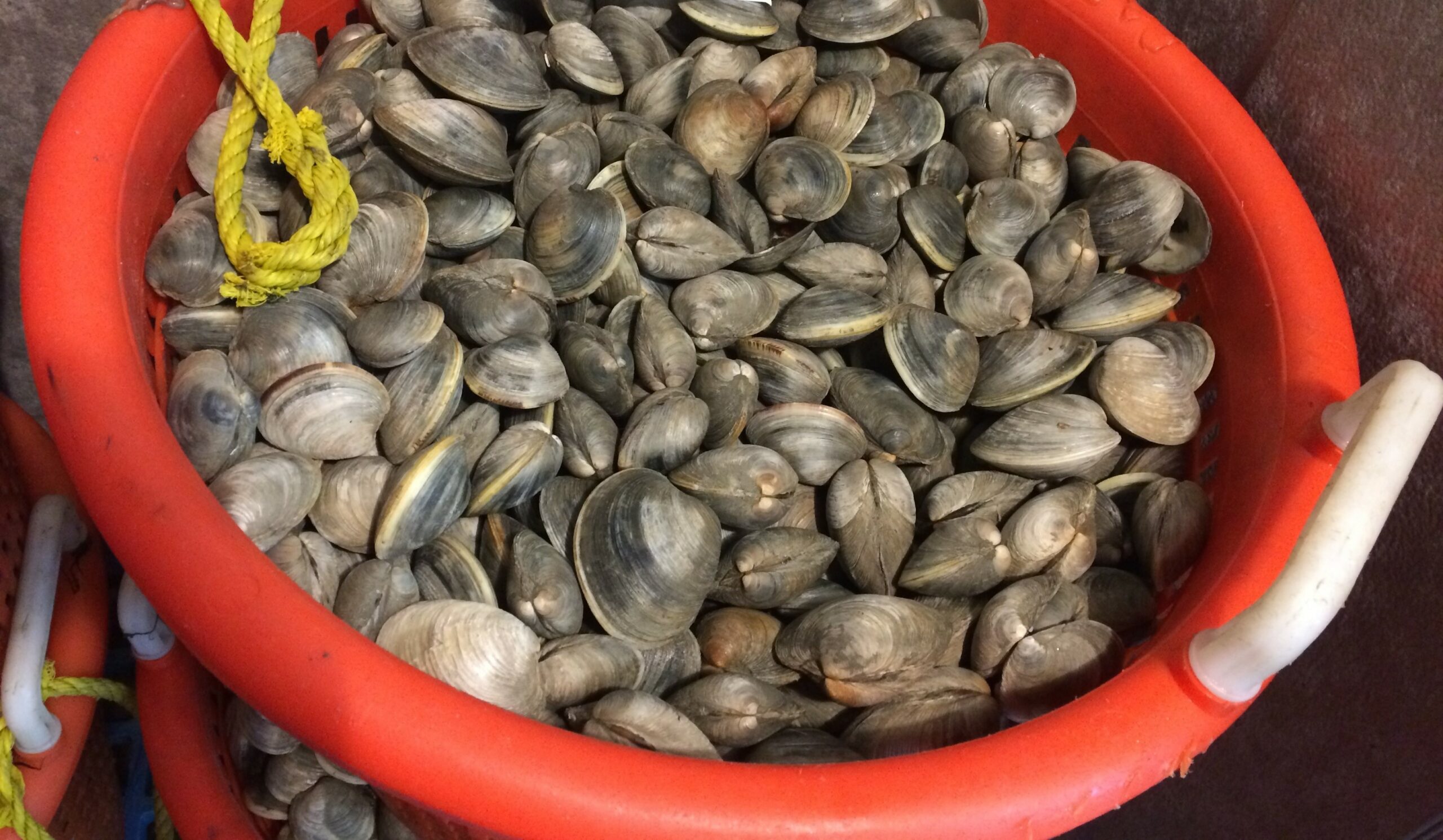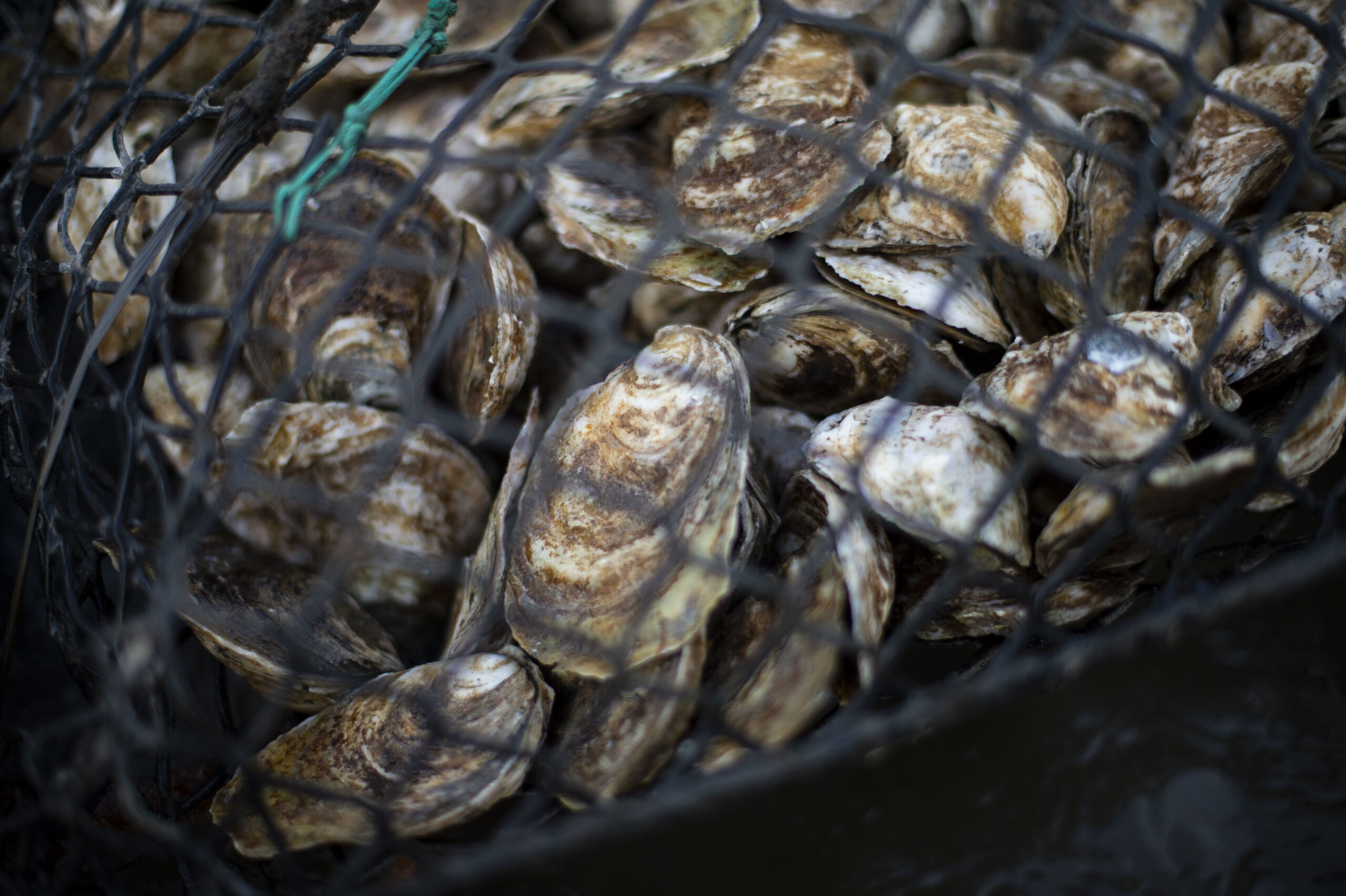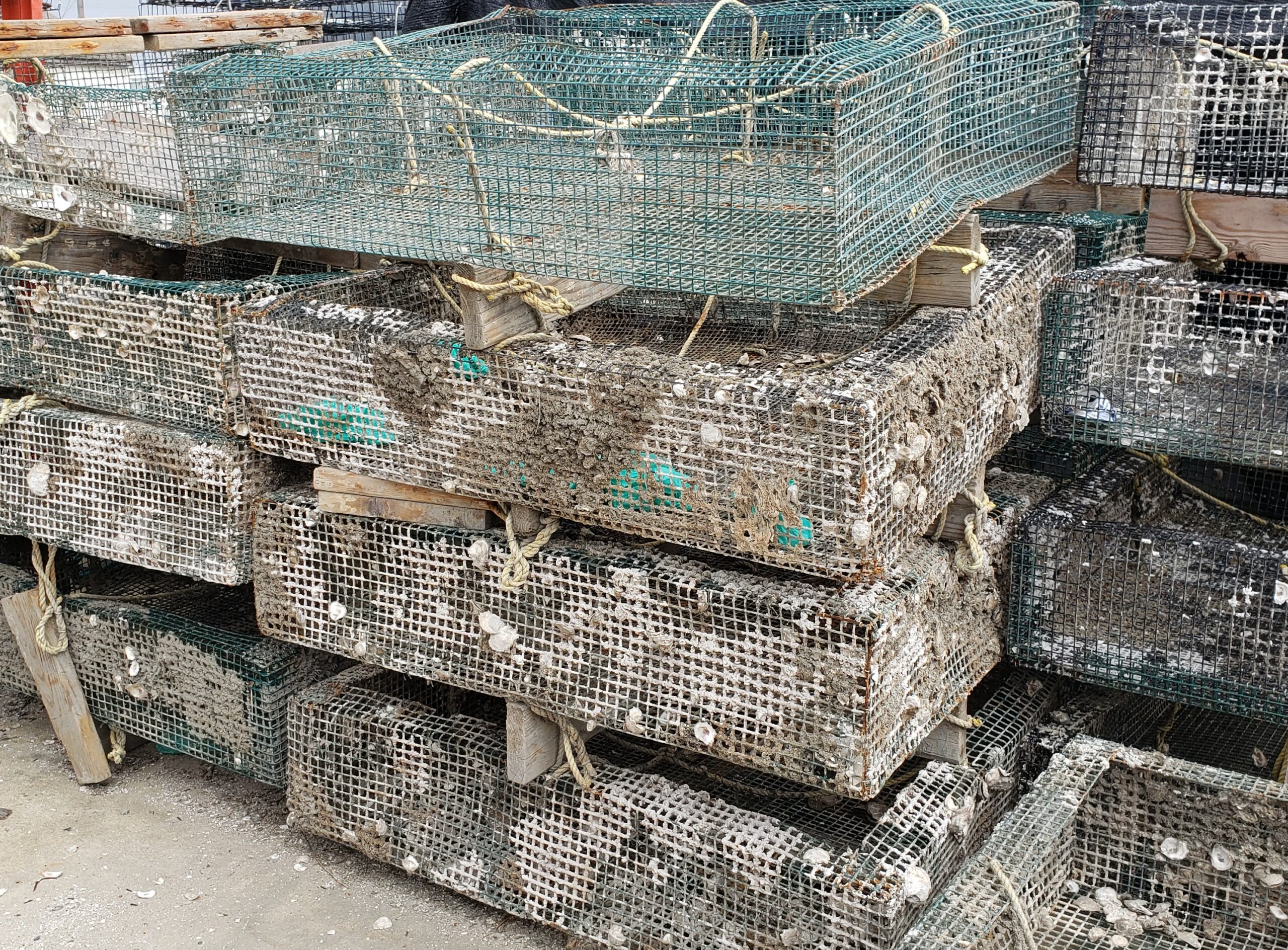Commercial Shellfish Aquaculture Website
Find out more information about Commercial Shellfish Aquaculture in New Jersey.



Aquaculture is a water dependent form of agriculture involving the propagation, rearing, and subsequent harvesting of aquatic organisms in controlled or selected environments.
Leasing of the bottom for shellfish aquaculture in New Jersey has occurred since the early to mid-1800s. At that time virtually all leases were used for on-bottom oyster production. Today, there are over 36,000 acres of shellfish aquaculture leases used to raise hard clams (Mercenaria mercenaria) and oysters (Crassostrea virginica). Shellfish aquaculture can be divided broadly into two main categories:

- Non-structural – otherwise known as traditional on-bottom shellfish aquaculture:
- Planting of hatchery reared clams/oysters on the bottom
- Planting shell on the bottom for natural recruitment
- Planting cultch or spat catching devices (e.g., hats)
- Intermediate transplanting of seed oysters for grow out
- Moving wild hard clams to lease areas
- Structural aquaculture using the bottom or water column typically includes:
- Rack and bags
- Cages and bags
- Floating bags/cage systems or longline bag systems (which generally involve bags attached to a line lying on the bottom).
Structural aquaculture typically involves the tending and harvesting of purchased (hatchery produced) seed as it is grown to market size in containment structures. These structures require additional Federal and State permitting. To read more about the permitting program and what permits are available for certain activities, click the Learn More tab above.
All applications for commercial shellfish aquaculture leases are reviewed by the New Jersey Shellfisheries Council before they render a decision. If the Council decides to approve the lease application, the Commissioner of the NJDEP would have to approve the Council’s decision to issue the lease.
The shellfish leasing program occurs within designated tidal waters along the Atlantic Coastal estuaries and Delaware Bay. The Bureau of Marine Habitat & Shellfisheries manages and coordinates the two independent sections of the New Jersey Shellfisheries Councils (broken down by region as the Atlantic Coast and Delaware Bay sections).



Reminder: Shellfish Planting
All NJ shellfish aquaculture leaseholders are reminded that per N.J.S.A. 50:1-34 and 1-35, no shellfish (of any size), native to, or brought directly or indirectly from, any foreign country or any other state, shall be planted or lodged in the waters of this State without written permission issued by the Commissioner, after notice to the appropriate section of the NJ Shellfisheries Council.
Planting shellfish brought in from outside of New Jersey without written permission from the DEP is a violation of State law.
Click here for additional information (including the Application for Permission to Import Shellfish).
Additional Resources:
Shellfish Growing Water Classification
2023 Vibrio Control Plan
Atlantic Coast Shellfish Aquaculture Leasing Policy
Atlantic Coast Leases Permission to Work Form
Application to Import Shellfish Seed
General Permit 30 Notification Form
2023 Lease Activity Form
NJ Shellfish Harvester Online Training
2024 Shellfish Lease Agreement
2024 Shellfish Lease Agreement Letter
Frequently Asked Questions – Shellfish Lease Agreement
Shellfish Lease Renewal Forms
 Official Site of The State of New Jersey
Official Site of The State of New Jersey

